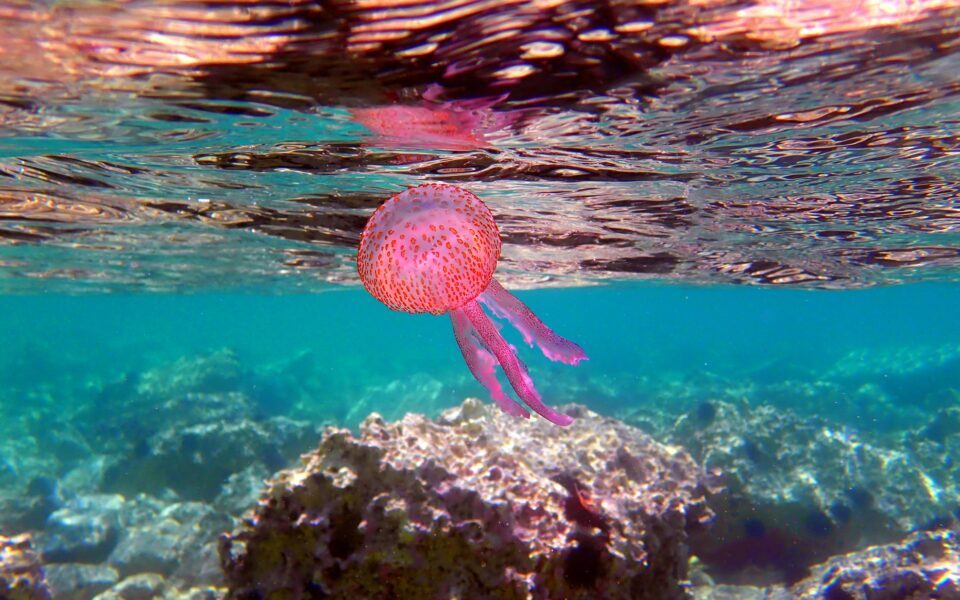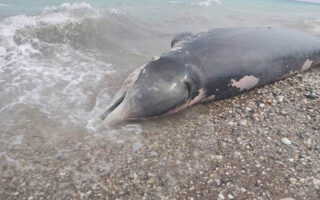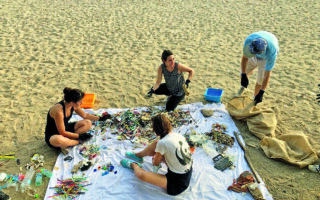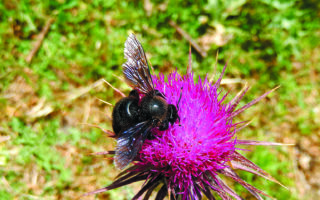Proliferation of purple jellyfish observed in parts of Aegean

Experts in Greece are keeping a close eye on the proliferation of a particularly undesirable species of jellyfish in several parts of the Aegean Sea, warning that rising sea temperatures and overfishing are exacerbating the phenomenon.
“This is the second year that we have observed an outbreak of Pelagia noctiluca in Greek waters,” the director of research at the Oceanography Institute of the Hellenic Center for Marine Research (HCMR), Epaminondas Christou, tells Kathimerini, using the Latin name for the purple jellyfish.
The jellyfish, which carries a very painful sting in its long tentacles, has already been sighted in large numbers in the central and northern Aegean, but also further south, and particularly in the Saronic Gulf near Athens, with residents on Aegina saying the problem was particularly acute last weekend.
According to Christou, the purple jellyfish is a pelagic species that reproduces in the open sea and drifts on the currents, reaching coasts and beaches. It is found across the Mediterranean, he adds, though the “persistence of the phenomenon in Greek waters indicates that there may be a breeding site in the Aegean.”
“According to older cycles, outbreaks of this particular species appear every 10-12 years and last two to three years. It remains to be seen if the pattern will repeat itself or if it will last longer,” he says, adding that climate change and dwindling fish stocks are contributing to the phenomenon.
“On the one hand, the rising sea temperature increases its reproduction rate. On the other, the reduction of pelagic fish, which feed on them, gives the jellyfish ground to spread. The same is the case with the declining numbers of turtles, which are their main predator,” Christou says.
He recommends that people swimming in areas where there have been jellyfish sightings come to the beach prepared with sting lotion. Stings can also be treated with a salve of one part baking soda to one part water. It is also important to wash away any stinging cells that may be clinging to the skin, Christou says.
The purple jellyfish is orange-brown in adolescence and acquires a striking mauve or pink color in adulthood. It is fairly small, with a bell diameter of between 3 and 12 centimeters, and has long tentacles, which means it can sting from a distance of up to 2 meters.





